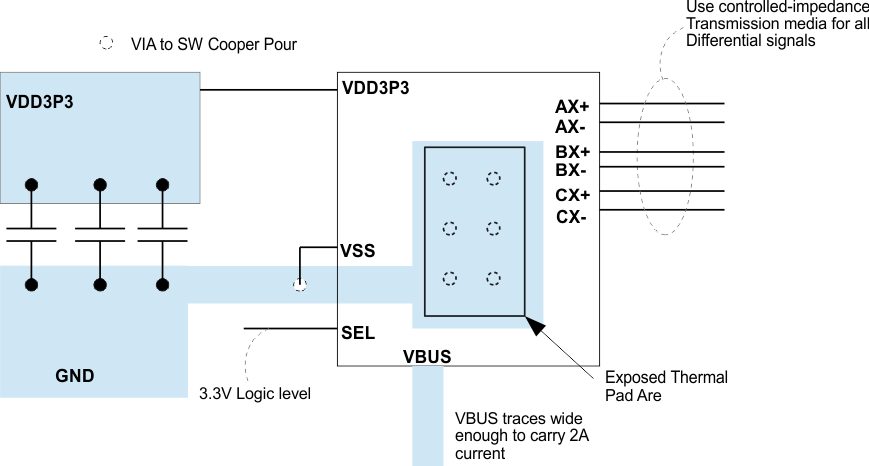SLAS974 December 2017 HD3SS3412A
PRODUCTION DATA.
- 1 Features
- 2 Applications
- 3 Description
- 4 Revision History
- 5 Description (continued)
- 6 Pin Configuration and Functions
- 7 Specifications
- 8 Parameter Measurement Information
- 9 Detailed Description
- 10Application and Implementation
- 11Power Supply Recommendations
- 12Layout
- 13Device and Documentation Support
- 14Mechanical, Packaging, and Orderable Information
Package Options
Mechanical Data (Package|Pins)
- RUA|42
Thermal pad, mechanical data (Package|Pins)
- RUA|42
Orderable Information
12 Layout
12.1 Layout Guidelines
- Decoupling caps should be placed next to each power terminal on the HD3SS3412A. Take care to minimize the stub length of the race connecting the capacitor to the power pin.
- Avoid sharing vias between multiple decoupling caps
- Place vias as close as possible to the decoupling cop solder pad
- Widen VDD/GND planes to reduce effect if static and dynamic IR drop
- The VBUS traces/planes must be wide enough to carry maximum of 2-A current
12.2 Layout Example
 Figure 17. Layout Example
Figure 17. Layout Example